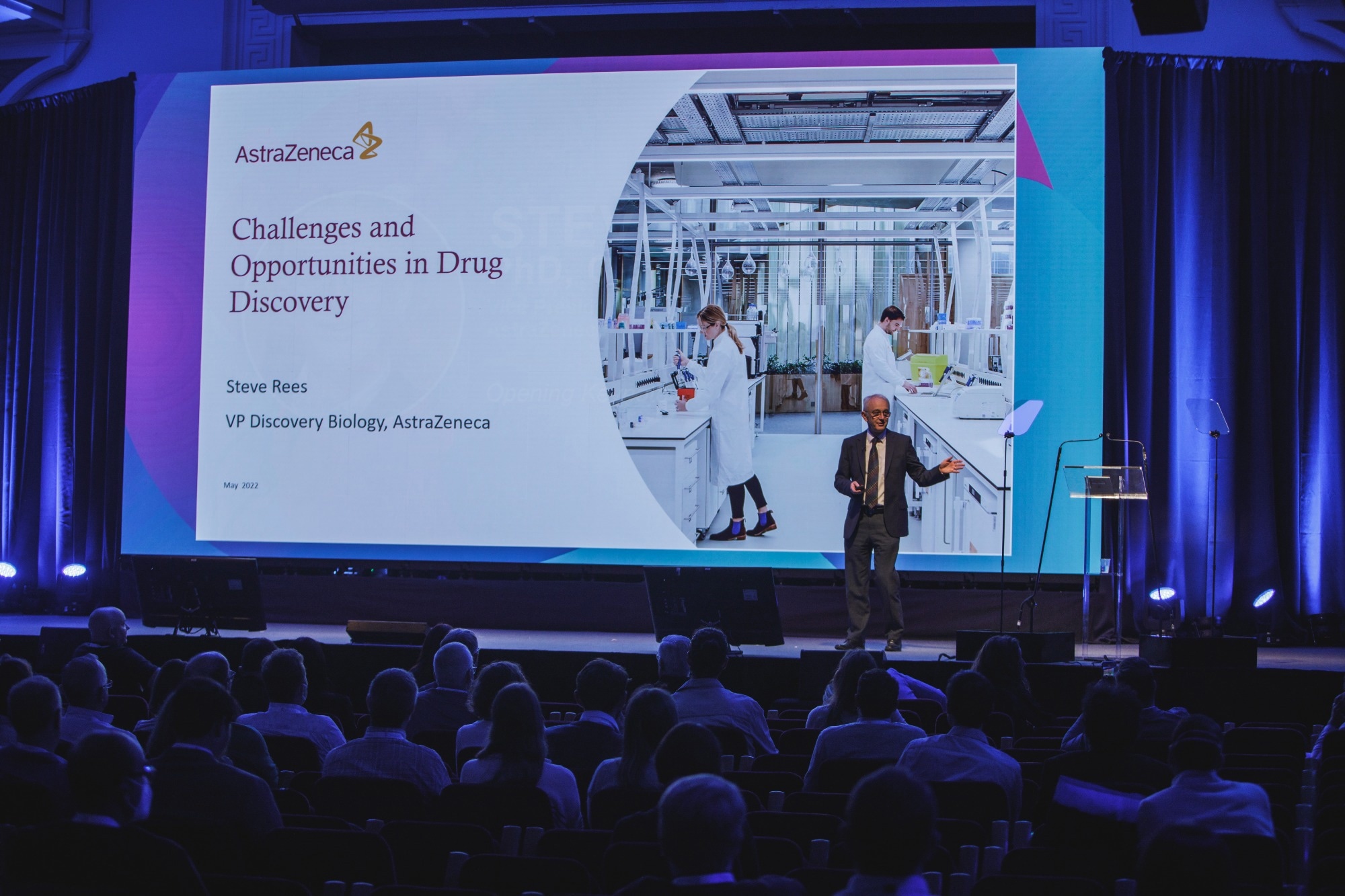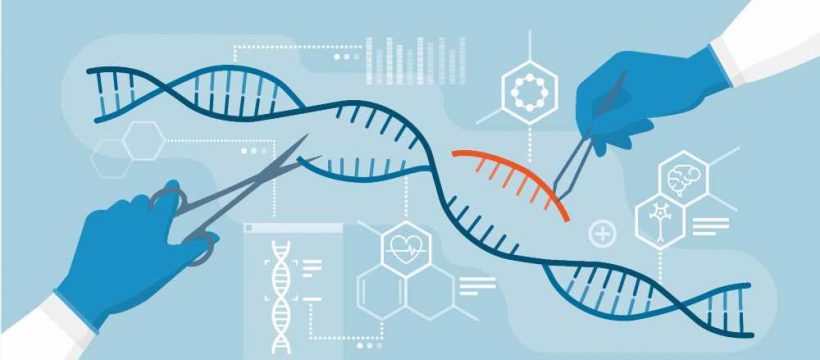 insights from industryVicki LoiseCEOSociety for Laboratory Automation and Screening (SLAS)
insights from industryVicki LoiseCEOSociety for Laboratory Automation and Screening (SLAS)As part of our SLAS Europe 2022 coverage, we speak to Vicki Loise, CEO of SLAS, about the importance of collaboration, communication, and conferences in accelerating life sciences research.
Please can you introduce yourself and tell us about your role at the Society for Laboratory Automation and Screening (SLAS)?
My name is Vicki Loise, and I am the CEO of the Society for Laboratory Automation and Screening, also known as SLAS.
SLAS is an international professional society comprised of over 16,000 members from various scientific backgrounds, including industry, academia, and manufacturing and development. What are some of the core missions and values at SLAS?
Our core mission is twofold. The first is around education and providing the most relevant, recent content to our community that helps them advance in their work and careers. The second part of our mission is about connecting all of those people. We have an inclusive community, and we want to make sure that we are their focal point for connecting with each other.
There is so much happening in this field right now. Lab automation was on a relatively fast trajectory pre-COVID, and COVID made that grow exponentially. There is an understandable difficulty when you are used to having 40 people in a lab at one time, and suddenly, you are told that you only have four people in that lab, yet expectations are the same.
This meant that, for many, automation was the only way that those expectations were going to be met, so there have been tremendous developments in lab automation over the last couple of years. This also arose from the pandemic and learning how folks are trying to use that automation when the provider may not have been able to come in and do training. Many of our tech providers are adapting their equipment so that folks can learn how to use that equipment on the job.
One of the other things that have come out of the last couple of years is realizing that we can do science better and faster. A lot of what we have learned is to figure out different ways to do what has always been done but in a way that delivers science into the hands of the public as quickly as possible.
You offer a huge variety of resources for members, such as international conferences, grants, and scholarships, as well as networking opportunities. Why is having such a vast portfolio of resources critical in furthering your pursuit of ‘research excellence’?
We have a truly broad scientific community and are trying to ensure that we deliver a value proposition to that entire community. We know people come to us for different reasons and at different points in their careers, so we want to ensure that we have the right things for them when they come to those entry points.
Working alongside your members in a variety of life sciences disciplines allows you to help accelerate research and new discoveries. How do you feel the life sciences sector has changed over the last ten years, and are there any innovations that you were particularly excited by?
There were certainly a lot of great innovations coming to the forefront over the last ten years, pre-COVID. Everybody is excited about CRISPR: the general public has been using CRISPR in new and innovative ways, especially over the last two years, but the way it was used during the pandemic was simply unprecedented. If anybody had the opportunity to watch our keynote speaker on our opening day – Steve Rees, from AstraZeneca – he outlined how this disruption of a pandemic created this innovation.
This innovation forced our community to assess how they do things daily and ask those tough questions: “Why are we doing it this way? And can we do it better?” In doing this, they found a range of better ways to do science so that things like PCR testing could be developed and delivered to the public quickly so that vaccines could be developed from technology that had been around for a long time. Still, we could finally find exactly that right niche for that technology at a critical moment.
What has emerged is this breaking down of barriers between companies. Everybody is far more open to collaborating and breaking down some barriers.

Image Credit: elenabsl/Shutterstock.com
The ongoing COVID-19 pandemic has halted much scientific research worldwide and stopped in-person scientific conferences and exhibitions, with them becoming virtual instead. How important is having in-person conferences to SLAS? What are the advantages of these for the life sciences?
In-person conferences are critical to our community. This is, for us, a record-breaking attendance for our Europe conference. It is only the third time we have held it, and we had to take a two-year break between year two and year three, so to have that record-breaking attendance tells you how much people are craving those all-important in-person interactions and doing the things that we just talked about. To be able to walk up to somebody, have a conversation, and challenge or validate each other’s ideas.
You just do not get that virtually. Virtual was what we had to do when COVID hit because we needed to make sure that there was some way for the community to stay connected, and it was truly the only option. So now that we are in a place where being back face-to-face is possible, and we can do it safely, it is magical. You can feel the buzz around us, which continues to help us as an organization to understand where the community is, what they need, and how we can ensure that we are delivering that for them.
One lesson that has been internationally recognized from the pandemic is the importance of collaboration. Scientific advancements can be made quickly when academic, industry, and government needs are aligned. What role do you believe collaboration has within the life sciences sector, and how does SLAS help to foster innovation within its work?
I think collaboration is the key. A collaborative effort was set up between industry, academia, and government, and the results tell the whole story. The same goes for the vaccine developers in the US with Pfizer, BioNTech, and Moderna. So, a lot of government funding went into making sure that those technologies and vaccines happened as quickly as possible and then distributed as quickly as possible. Without collaboration, things will move much, much slower – if anywhere at all.
We are, again, breaking down some of those barriers, opening doors, and being willing to have conversations with your counterparts, whether across industry to academia or government, is absolutely critical. That is another big reason why SLAS is holding these events: we make it possible for all of those sectors to sit down and have a conversation with someone doing very similar science, but maybe in that different sector. There are not a lot of lawyers or corporate executives standing around – instead, they can just talk about the science, which is how we get to the end result.
Another thing is that science is not merely limited to those talks. All the people on this floor are scientists. That is how these technologies are developed: by having conversations with their customers – so there is a great deal of science that gets exchanged on the exhibit floor and a lot of learning that can happen on the exhibit floor.
SLAS Ignite is one of your initiatives in helping to promote collaboration within science. You also offer the SLAS Ignite Award, which recognizes innovative new companies within the life sciences. Why do you believe it important to highlight some of the incredible new start-ups we are seeing?
To put it simply, start-ups are where it is at. Start-up companies are where new and innovative science begins. Very often, those start-up companies are working on a challenge or a problem that several large companies are having as well, but they do not have the time, resources, or focus for that one particular challenge, and so the start-up company is focused on figuring that out.
Keeping those start-up companies as part of SLAS and our events is one of our top priorities. We make significant investments in things like Innovation Avenue and the SLAS Ignite program so that those start-up companies have a platform to talk about their products – not just with the attendees but with the other companies that are here.

Image Credit: SLAS
At many of your in-person events, you offer networking opportunities for students and early-career professionals looking to start their careers in life sciences. Why is allowing young people the opportunity to network with professionals in the industry so important? How can these opportunities help continue incredible scientific advancements and encourage more people to pursue a career within science?
As we have mentioned, collaboration and networking are the keys to success in science. So many of these early-career scientists are now having that opportunity to build a network. They have either been at university – or maybe working as a postdoc – and simply have not had the same opportunities. This is where we provide them with not only the place to do it but also with some mentoring and training: trying to bring them together with people who can either help advance their career or help them advance a question that they are working on.
Those folks are the future of SLAS, and they are the future of the life sciences community, so we want to make sure that we give them that opportunity to start building that network. We do this so that they can grow their careers – even possibly becoming a version of Steve Rees in 10 or 20 years – pulling together a network and working to solve one of the world’s most significant challenges.
How can people get involved with SLAS and become a member?
It is very easy to be part of SLAS. You can go to our website, where you can find information about joining and volunteering. We also have folks in our office who are happy to talk to anybody with questions at any time.
We have a membership department that can answer questions, and you can find their names and how to reach them on the site.
What do you believe the future of life sciences to look like? Are there any particular sectors that you are excited to watch evolve?
I am really excited about what is happening in the data science space right now. The way that science and research are evolving means that huge amounts of data are being generated in the lab. One of the challenges labs are having at the moment is how to manage that data: how to best use it, store it, slice it and dice it.
Several companies have emerged over the last couple of years focused on precisely that issue, helping those labs with that data and using AI to help them with some of their decision-making. This is a space that I think is going to be really interesting and explode over the next year or two.

Image Credit: PopTika/Shutterstock.com
What does the future look like for SLAS? Are there any exciting projects in the pipeline?
We have a couple of very exciting projects coming up. In 2021, the SLAS board of directors and some of our volunteer leadership team put together a new strategic plan that starts here – in 2022 – and takes us through 2026, containing ten action steps.
One of the items is to develop a lab for the future platform, so we plan to collect resources and information to be a dynamic and constantly evolving platform where community members can interact. We wanted to create a location where users could come and see what they should be looking at; how they should be solving a problem, and finally, how they should be setting up their labs for the future to make sure that they are always on the cutting edge of automation to do the work that they are doing.
What do you love most about SLAS?
I really do love the people in this community. They are, first and foremost, some of the kindest people I have ever met. They do not come in with any agendas or egos. They genuinely want to work together to solve the life sciences problems and advance their research, and they care about this organization.
This organization's leadership – and the volunteer leadership – has always been phenomenal. That has always been their number one priority: to make sure that the organization is moving forward and growing, and it is an absolute delight to work with them.
About Vicki Loise
Vicki Loise is chief executive officer for SLAS, the Society for Laboratory Automation and Screening, a global non-profit organization dedicated to advancing life sciences discovery and technology. In this role, she directs the planning, development, and implementation of Society programs. Other responsibilities include interacting with the Board of Directors to establish strategic directions; leading planning efforts for the global growth and sustainability of the Society; and supervising all professional and contract staff team members.
Prior to SLAS, Loise worked for Kellen, a global association management firm. As vice president of association management at Kellen, she provided strategic planning and guidance to international societies, led business development efforts that increased revenue and raised awareness, and mentored professional team members in executive-caliber skills. From 2005-2014, Vicki served as the executive director for the Association of University Technology Managers (AUTM), where she raised awareness of the association and the profession, while providing strong stewardship and governance to the organization. From 1993-2005 Loise worked for the National PTA completing her time there as Director of Development. Loise began her career in association management with AAOMS, American Association of Oral and Maxillofacial Surgeons, from 1991-1993 in their meetings department.
Loise is a member of the American Society of Association Executives and Association Forum. She earned her Certified Meeting Professional designation in 1995 and Certified Association Executive designation in 2005. She is a graduate of Central Michigan University, having earned a bachelor’s degree in interpersonal and public communications.
Sponsored Content Policy: News-Medical.net publishes articles and related content that may be derived from sources where we have existing commercial relationships, provided such content adds value to the core editorial ethos of News-Medical.Net which is to educate and inform site visitors interested in medical research, science, medical devices and treatments.
